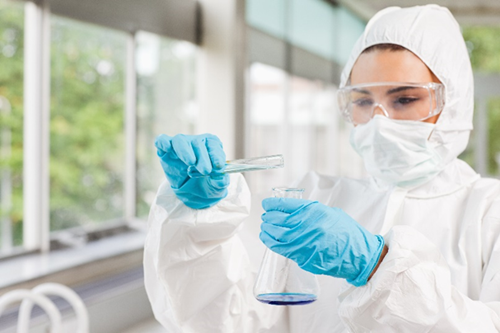Nanotechnology in Pharmaceutical R&D: Drug Delivery System

Pharmaceutical industry now utilize Nanotechnology as a platform for new technology development. It is the science that deals with the processes that occur at molecular level and of nanolength scale size. It opened new opportunities for improvement in different aspects of pharmaceutical manufacturing, e.g. drug designing.
The scope of pharmaceutical nanotechnology is very wide, from smart material for tissue engineering to intelligent tools for delivery of drugs. Novel drug delivery comprises a number of features of nanotechnology, and its importance is in the concept and ability to manipulate molecules and supramolecules for producing devices with programmed function. Examples of the current nano drug delivery systems are: liposomes, polymeric micelles, nanoparticles, and dendrimers.
Liposomes are small artificial vesicles of spherical shape that can be created from cholesterol and natural non-toxic phospholipids. They are the most developed nanotechnology product for the novel and targeted drug delivery due to their size and amphiphilic (hydrophobic-hydrophilic) character. They have been successfully used in cancer therapy, pulmonary delivery, ophthalmic drug delivery, leishmaniasis, and as carrier for antigens.
Polymeric micelles are nanoscopic supramolecular core-shell structure that is composed of amphiphilic block copolymers. They are used for the systemic delivery of water-insoluble drugs. Polymeric micelles have proved an excellent novel drug delivery system due to high and versatile loading capacity, stability in physiological conditions, slower rate of dissolution, high accumulation of drug at target site, and possibility of functionalization of end group for conjugation of targeting ligands.
Nanoparticles can be classified into two groups: (1) Polymeric nanoparticles; and (2) Metallic nanoparticles. Polymeric nanoparticles are colloidal carriers having inherent properties like biocompatibility, nonimmunogenicity, nontoxicity, and biodegrability. They are usually used for intracellular and site specific delivery. For metallic nanoparticles, they are good delivery carriers for drug and biosensor. Silver and gold nanoparticles are of great importance for biomedical use among all metallic nanoparticles.
Dendrimers are hyperbranched, tree-like structures and have compartmentalized chemical polymer. They bear promising properties for delivery of bioactives ranging from drugs, vaccines, metal, and genes to desired sites. Most important applications of dendrimers are gene therapy, immunoassay, and MRI contrast agent.

The use of these carriers allows for a much higher active moiety/carrier material ratio compared to "direct" molecular conjugates, and is also capable of carrying multiple drug species. They also provide a higher degree of protection from enzymatic degradation and other destructive factors upon administration because the carrier wall completely isolates drug molecules from the environment.
The method of preparation for nanopharmaceuticals will always vary depending on the physical character of the polymer and the active ingredient used. For example, for nanopharmaceuticals used in ophthalmology, the ultimate goal is to keep the product sterile or free from contaminating microorganisms. To make it possible, it is advised to use an isolation system in preparing this type of drug. It is required to maintain a positive pressure so as to maintain the sterility of the product. However, for nanopharmaceuticals containing cytotoxic drugs, the requirement is unique for its preparation since hazardous substances are involved. The product should still be sterile and free from contamination, without compromising the safety of the operator and the environment.
These novel drug delivery systems offer tremendous opportunity for development of site-specific delivery systems for drugs and genes. They are especially critical in an era of rising healthcare cost and development of multidrug resistance in cancer and infectious diseases. Esco Pharma supports this by promoting research and providing continuous innovation from discovery up to the delivery of drugs. Thereby, improving the healthcare industry.
References:
-
Mansoor M. Amiji, Nanotechnology for Drug Delivery: An Overview. Northeastern University, Boston, 2006.
-
N.K. Jain, Pharmaceutical Technology: Pharmaceutical Nanotechnology, 2007.
-
Saurabh Bhatia, Nanotechnology and Its Drug Delivery Applications, 2016.





